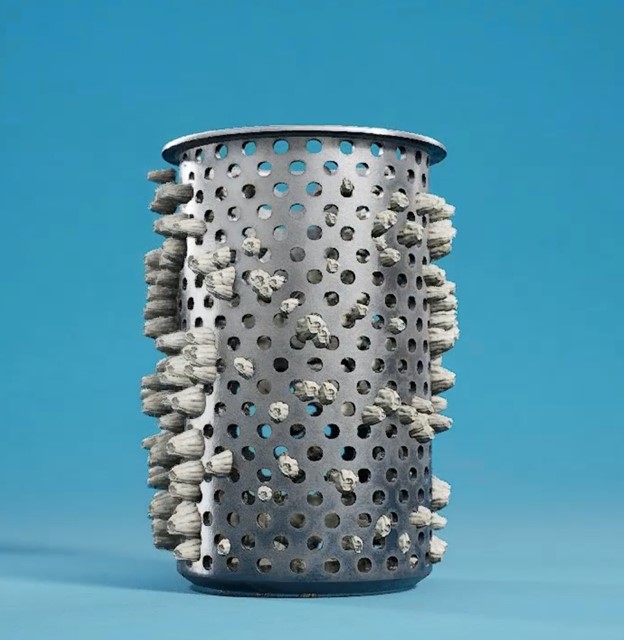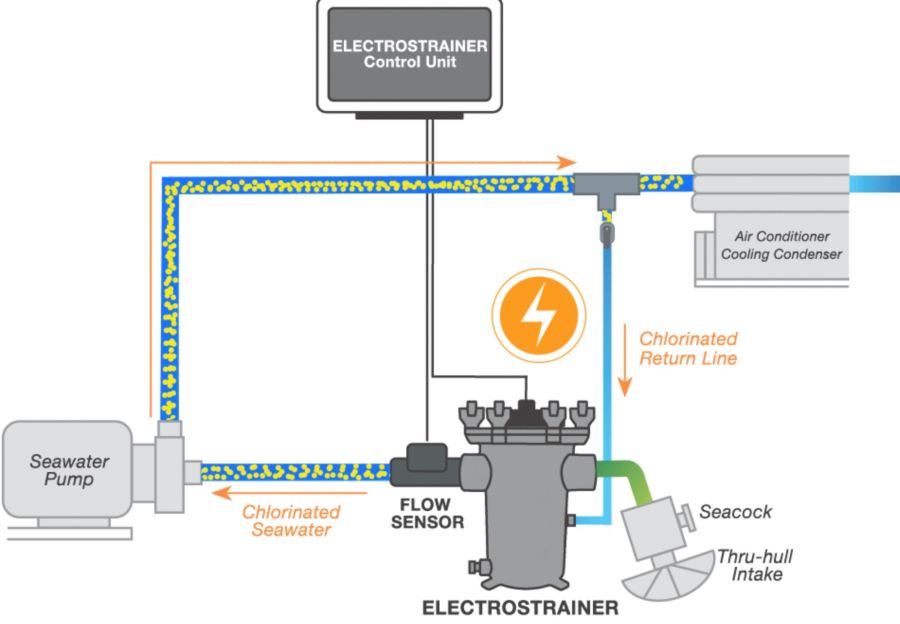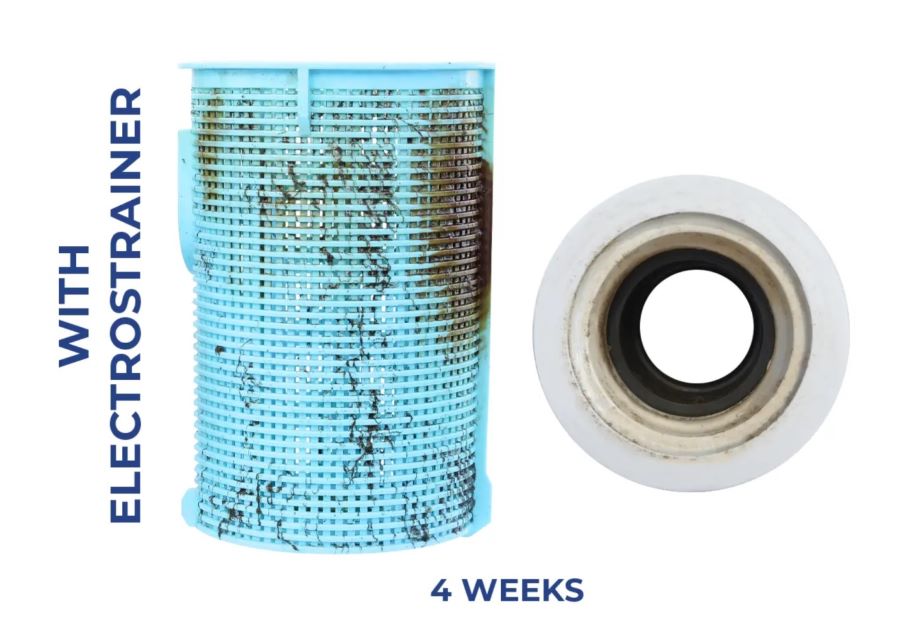ElectroSea ElectroStrainer System
ElectroSea ElectroStrainers Keep ACs (and You) Cool

Marine air conditioners are an essential part of summer yachting and boating in the Tropics almost year-round. But keeping the systems functional presents some problems not found in the AC systems all of us are familiar with at home and at work.
The reason?
Marine ACs are water-cooled, and water in coastal areas contains minute offspring of barnacles, oysters, mussels and other hard-shelled organisms. They’re programmed to latch on to any hard structure they contact, settle in and start to grow. And they grow very rapidly.
Algae, slime and other soft growths can also accumulate — they’re usually less problematic than shellfish, but still, build up over time.

Unchecked, enough of this “biofouling” can accumulate inside the cooling passages of a marine air conditioner’s heat exchange system to reduce the flow. Best case, this reduces cooling efficiency — you don’t stay as cool as you expect.
Worst case, your AC overheats and has to be rebuilt or replaced, a very costly repair.

Traditional Cleanout: Risky and Environmentally Harmful
The traditional solution is regular cleaning via high-pressure rinse, scrubbing and scraping of the strainer basket on the sea-water supply line, as often as every 2 or 3 weeks in warm, high-growth areas.
In addition, most also clean the system with a chemical agent, commonly phosphoric or muriatic acid, once or twice each boating season. But this is a process that can decrease the life expectancy of your air-conditioning system and progressively eat away at joints in the plumbing.
It’s also potentially harmful to service technicians, crew and the environment.
Placing pool chlorine or bromine-high test hypochlorite tablets (HTH) into the sea strainer basket also works, but again there’s potential environmental harm in the outflow.
ElectroSea has a better solution in their ElectroStrainer system, which requires almost no attention throughout the boating season, presents no risk in servicing and no harm to the environment.

The ElectroStrainer is plumbed directly into the water supply for any raw-water-cooled device, replacing the existing sea strainer. With the ElectroStrainer system, raw water passing through the filter basket is subjected to a low DC current. The electricity running through the seawater, NACL+H20, produces chlorine, NaOCl + H2, which kills nearly all biogrowth as it passes through the filter.

Minimal maintenance is required, and the monitoring system alerts the user if the flow ever begins to fail, indicating the filter basket or other component has issues.



There are four ElectroStrainer models, based on flow, ranging from the ES-100, which produces 3-12 gpm at optimal flow, to the ES-200, which produces 20-40 gpm at optimal flow. The control unit not only tells you when the unit is cleaning but also measures the flow rate through your system so that you can head off problems early. The system is easily installed, replacing the current raw water filter next to the seacock.
For details, visit https://www.electrosea.com.